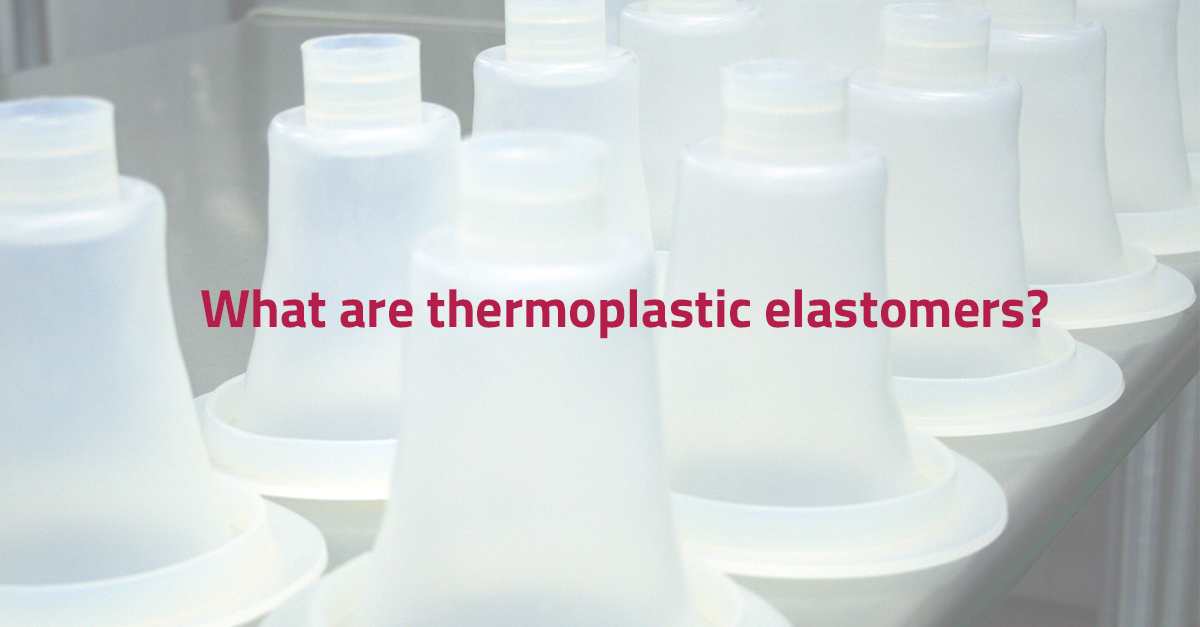
What are Thermoplastic Elastomers?
Have you ever wondered about the versatile materials that seamlessly blend rubber's flexibility with plastic's processability? Enter the world of thermoplastic elastomers (TPEs), a fascinating class of polymers that combines the best of both worlds. In this guide, we’ll unravel the secrets of this material that boasts unique properties, enabling diverse applications through efficient processing techniques. Get ready to explore the dynamic realm where elasticity meets the ease of molding, making TPEs stand out in polymers.
Properties and Characteristics of Thermoplastic Elastomers
Thermoplastic elastomer (TPE) is a fascinating polymer characterized by its rubber-like or elastic properties behavior. Unlike thermosetting elastomers, TPEs can extend or compress when subjected to a load, effortlessly reverting to their original shape once the load is removed. What sets them apart is their unique ability to harden as they cool down, reducing the need for curing. Many TPEs can be melted and recycled, making them versatile and environmentally friendly.
The realm of thermoplastic elastomers (TPEs) unfolds into diverse materials, each tailored for specific applications. They include:
- Styrenic block copolymers (TPE-S): Widely employed in footwear and seals, TPE-S blends hard blocks of styrene with soft blocks of butadiene. The material exhibits insulative electrical properties, a broad hardness range, good abrasion resistance, and UV & ozone resistance.
- Thermoplastic polyolefins (TPE-O or TPO): TPO materials blend polypropylene or polyethylene with elastomers, offering good thermal and chemical resistance. As a result, the material is flame resistant, weather resistant, chemically resistant, and tougher than standard polypropylene copolymers.
- Thermoplastic vulcanisates (TPE-V or TPV): TPVs combine vulcanized polypropylene and ethylene propylene diene terpolymer (EPDM). The resulting material boasts a wider hardness range and better elastomeric properties than TPOs. Resistant to a range of temperatures, TPVs find applications in automotive seals and hoses.
- Thermoplastic polyurethanes (TPE-U or TPU): Reacting diisocyanates with polyesters or polyether polyols helps form TPUs. It offers excellent abrasion resistance, high tensile strength, elastic elongation range, and oil resistance. Adjusting the polyol and diisocyanate blend can help modify TPU's material properties.
- Thermoplastic copolyesters (TPE-E or COPE): TPE-Es, high-performance block copolymers, combine hard segments from polybutylene terephthalate with soft segments from various polyesters. Offering resistance to creep, compression set, and high temperatures, TPE-Es find applications in vehicle air ducts, ventilator bags, and conveyor belts.
TPE vs silicone is a common dilemma when choosing the right manufacturing material. The key contrast between TPE and silicone lies in their heat responsiveness. When heated, TPE can be reprocessed, offering a significant advantage. Therefore, when choosing between thermoplastic elastomer vs silicone for a product requiring reprocessing, TPE is the preferred option. Conversely, silicone has a superior temperature resistance range and excels in processes that operate at extremely high temperatures.
Applications and Uses of Thermoplastic Elastomers
TPE has many applications, making it an essential material in various industries. Its uses include:
Medical Applications
Renowned for their exceptional chemical resistance, biocompatibility, flexibility, and lightweight nature, TPEs are pivotal in the innovative health and medical device sector. Custom-made TPEs facilitate ergonomic, economic, and functional designs. They help make lids/closures, valves, dental equipment, hoses/tubes, syringe seals, caps, and membranes.
Pharmaceutical packaging fortified with TPEs offers another robust solution. It offers strength, durability, and protection against light, heat, moisture, and biological contaminants.
Industrial Applications
TPE materials play a crucial role in industrial applications. Their damping ability makes them ideal for making vibration isolators, springs, shock absorbers, drum suspension bushes, seals, and O-rings.
In consumer products, TPEs often undergo co-injection or over-molding onto substrates. The material is used in power tool grips, remote controls, mobile phone covers, and shock-absorbing components for vacuum cleaners. Appreciated for their durability, TPEs also find use in condensers and casings for plugs, sockets, and cables.
Military and Defense Applications
TPEs prove invaluable in military and defense applications, offering material stability and favorable thermal properties. The material is widely used in over-molding applications for handheld combat appliances, protective gear, and soft-touch grips.
Processing Techniques for Thermoplastic Elastomers
Thermoplastic elastomers exhibit excellent flow and mechanical properties when heated, solidifying rapidly upon cooling. Notably, the TPE material requires minimal compounding, reducing the need for reinforcing agents, stabilizers, or cure systems. These features enable their use with highly productive thermoplastic processing equipment and processes such as:
- Injection molding: This process stands out as the most widely employed technique in TPE processing due to its high productivity with minimal waste formation. The versatile method caters to diverse applications.
- Overmolding: Involves shaping a new form around or over an existing plastic molded form. This process complements injection molding by combining different resin materials and shapes without a separate assembly process. Overmolding improves ergonomics and increases part strength. The method further enhances design flexibility while reducing assembly time and cost.
Leverage Crescent Industries' Expertise in Thermoplastic and Part Design
Thermoplastic elastomers provide versatility, sustainability, and unparalleled elasticity, making them indispensable across diverse industries. TPEs offer various possibilities, from their unique elastomeric properties to efficient processing techniques. These materials provide unmatched benefits for medical, industrial, and military applications.
To leverage the full potential of thermoplastics and part design, look to Crescent Industries as an invaluable partner. With expertise in thermoplastic elastomer injection molding and overmolding, we ensure top-notch quality and efficiency. Take the next step in realizing your vision by exploring Crescent Industries' services in thermoplastic manufacturing and part design. Contact us today to start your journey to exceptional thermoplastic elastomer products and solutions.
Topics:
Related Articles
-
Mar 17, 2025
Advancements in Plastics Additives – What to Consider
Read MorePlastic additive technology has made some massive advancements over the past 10 years, but with all...
-
May 13, 2024
ABS Injection Molding: Benefits and Process
Read MoreThe types of plastic used to create components and products depend on its strength, heat...
-
Feb 20, 2024
What are Thermoplastic Elastomers?
Read MoreHave you ever wondered about the versatile materials that seamlessly blend rubber's flexibility...
